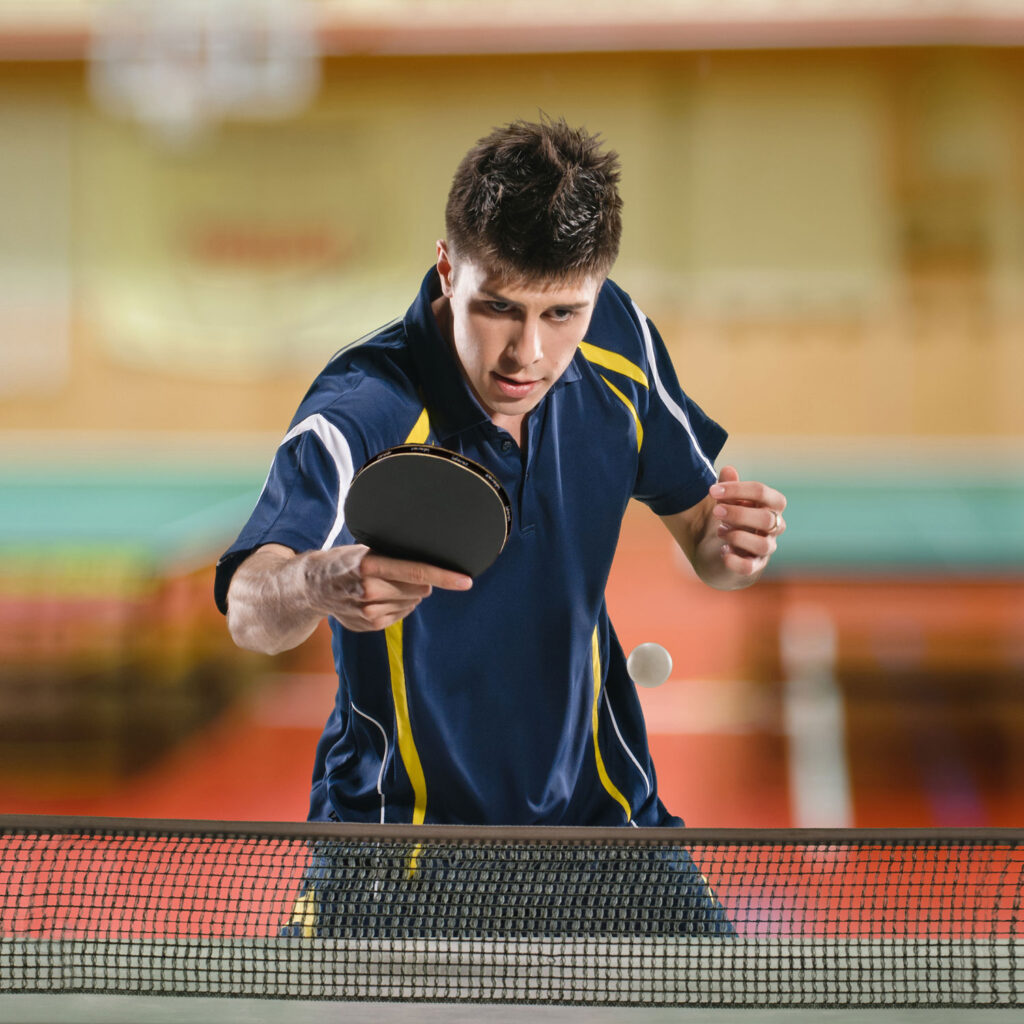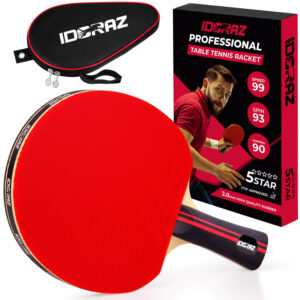Table tennis, commonly known as ping pong, is a sport that combines lightning-fast reflexes, strategic thinking, and precise control. Whether you’re stepping onto the table for the first time or looking to refine your skills, understanding the basics is crucial. In this comprehensive guide, we will delve into the fundamental aspects of table tennis, providing novice players with the knowledge they need to enjoy and excel in this exhilarating sport.
The Table and Its Dimensions
Before delving into the gameplay, let’s familiarize ourselves with the table. A standard table tennis table is rectangular, measuring 9 feet in length and 5 feet in width. The table is divided into two halves by a net, which stands 6 inches high. The playing surface should be of uniform dark color, and the net assembly must be securely attached to the table.
The Paddle: Your Extension on the Table
The table tennis paddle, or racket, is your primary tool on the table. It consists of a blade and two rubber surfaces. The blade is typically made of wood, and players often customize their paddles with rubbers that provide varying levels of grip and spin. When selecting a paddle, consider your playing style and skill level, as the right paddle can significantly impact your performance.
The Serve: Initiating the Point
The serve is the starting point of every table tennis match. When serving, the ball must be thrown vertically at least six inches and struck so that it bounces on the server’s side of the table, then clears the net and lands in the opponent’s side. The serve must be diagonal, and the ball must be struck from an open palm.
Scoring: Understanding the Game Points
A table tennis match is typically played to 11 points, with the winner being the first player to reach this score. Points are scored when the opponent fails to return the ball within the bounds of the table or commits a rules violation. A game is won by the player or team who first reaches 11 points with at least a 2-point advantage over their opponent.
Basic Strokes: Building Your Arsenal
Table tennis involves a variety of strokes, each serving a specific purpose during a match. Mastering the basic strokes is fundamental to becoming a proficient player:
- Forehand Drive:
- Executed on the forehand side of the body.
- A controlled, offensive shot used to keep the ball in play.
- Backhand Drive:
- Similar to the forehand drive but executed on the backhand side.
- Develops consistency and control.
- Forehand and Backhand Topspin:
- Adds spin to the ball, making it more challenging for opponents to return.
- Requires a brushing motion to impart topspin.
- Backhand Push:
- A defensive shot played close to the net.
- Useful for returning backspin shots from opponents.
Footwork: The Foundation of Table Tennis Success
Effective footwork is the cornerstone of success in table tennis. Players must constantly adjust their position to reach the ball efficiently and maintain balance. Practice lateral movements, quick steps, and proper weight transfer to ensure that you’re always in the optimal position to execute your shots.
Rules and Etiquette: Playing with Integrity
To enjoy a fair and respectful game, it’s essential to familiarize yourself with the rules and etiquette of table tennis. Key considerations include:
- Legal Serve:
- The ball must be thrown vertically and struck from an open palm.
- The ball must bounce on the server’s side, clear the net, and land on the opponent’s side.
- Let:
- If the ball touches the net during a serve but still lands in the correct service court, it is a let, and the serve is retaken.
- Point and Change of Serve:
- A point is scored when the opponent fails to make a legal return.
- Players switch serves after every two points.
- Sportsmanship:
- Maintain respect for opponents and officials.
- Avoid distractions or unsportsmanlike behavior.
Training and Improvement: Elevating Your Game
Table tennis is as much about skill as it is about practice. Develop a consistent training routine that focuses on all aspects of the game, including serves, strokes, footwork, and strategy. Consider joining a local club or finding a practice partner to enhance your playing experience.
Conclusion: Embark on Your Table Tennis Journey
Armed with the knowledge of the basics, you’re now ready to embark on your table tennis journey. Whether you’re playing for fun, fitness, or competition, the fundamentals outlined in this guide will set a solid foundation for your growth as a player. Remember, table tennis is a sport that rewards precision, strategy, and a passion for improvement. So, step onto the table, paddle in hand, and let the exhilarating world of table tennis unfold before you. Welcome to the game!


